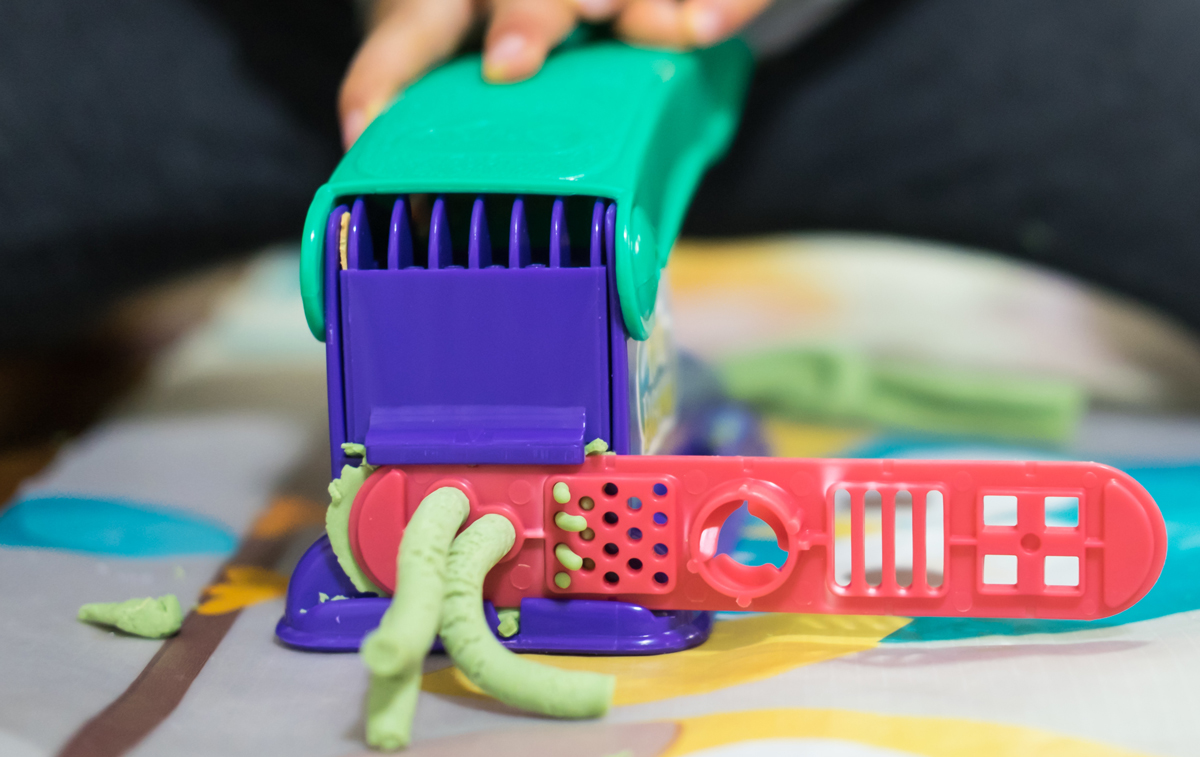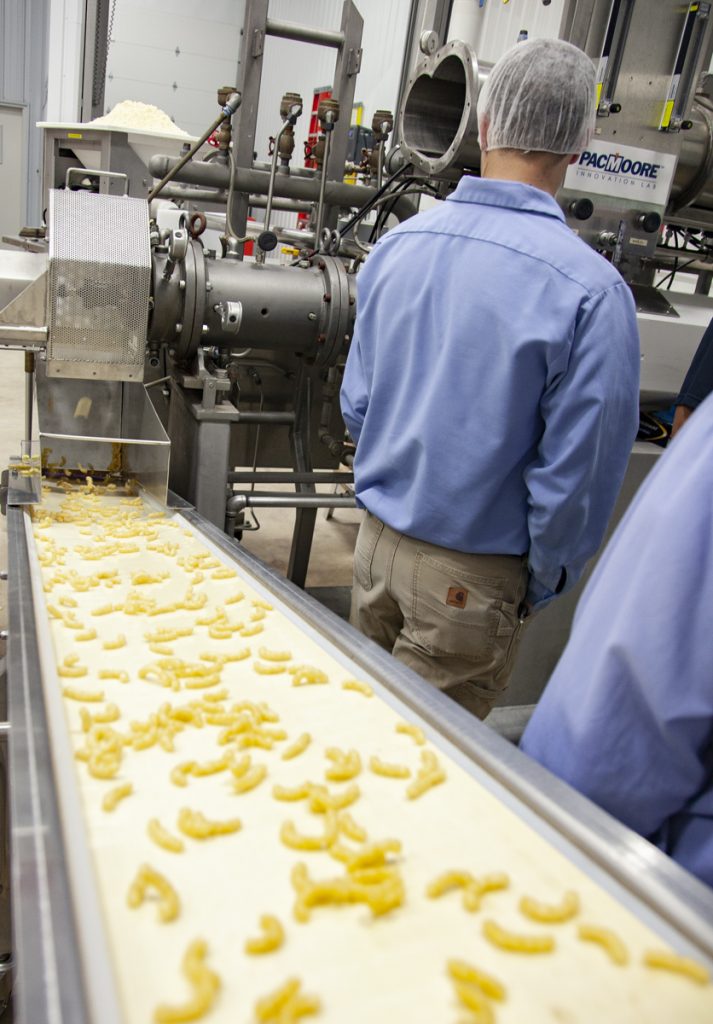You know, many times food scientists seem to make things really challenging to understand. As a self-diagnosed food nerd, I will admit that I tend to get very excited about food processing. The beloved Clark Griswold is perhaps the best known food nerd for overcomplicating things with his revolutionary creation, the “Crunch Enhancer, A Non-nutritive Cereal Varnish” as highlighted in the “classic” film, National Lampoon’s Christmas Vacation.
In that context, this is my best attempt to simply communicate the extrusion process at PacMoore.
Remember this toy?

Virtually everyone who had a Play-Doh Fun Factory®* growing up understands what extrusion is. So it appears that my work here is done!
The Process of Cooking Extrusion in the Food Industry
 While cooking extrusion can be quite complex, the overall concept is really this simple: make a paste and form it through a die (in the photo of the toy above, the red piece would be the die). Cooking extrusion continuously mixes dry and liquid ingredients while controlling temperature and ultimately forcing the material through a die to form a distinct shape. Each project with a uniquely shaped product requires a uniquely shaped die.
While cooking extrusion can be quite complex, the overall concept is really this simple: make a paste and form it through a die (in the photo of the toy above, the red piece would be the die). Cooking extrusion continuously mixes dry and liquid ingredients while controlling temperature and ultimately forcing the material through a die to form a distinct shape. Each project with a uniquely shaped product requires a uniquely shaped die.
This blend of ingredients and liquids is transformed into a flowable paste and typically subjected to high pressure and heat in the extruder barrel and then expands rapidly at the die due to the drop in pressure and is subsequently cut to length. This is how corn meal, water, oil, and a bit of cheese powder are turned into those tasty, crispy cheese curls. In other cases, finished product characteristics may require lower temperatures and pressures to eliminate any expansion and form a more dough-like extrudate.
While the extruder process section is the heart of the operation, most products produced by extrusion require other pre or post extrusion processes. These generally include the following:
1. Blending
Blending combines multiple dry raw materials (flours, proteins, sweeteners, etc.) into a homogenous mix to be processed in the extruder.
2. Extrusion
The raw material blend is fed into the extruder barrel where the twin co-rotating, intermeshing screws work to convert the blend into a flowable mass.
3. Die
The die is attached to the end of the extruder barrel and determines the profile of the extrudate.
4. Pelletizing
Pelletizing allows for the extrudate to be cut into small pieces.
5. Drying
Most extruded products require a reduction in moisture to remain shelf stable and achieve the typical “crunch” associated with extruded foods.
6. Sizing, Sifting
Extruded products generally go through a sizing step to remove any clumps or small product fragments created during processing.
7. Product Magnet, Metal Detecting
Due to close equipment tolerances and the potential for metal to wear, foreign material detection devices are utilized to ensure product safety.
The Products
Expanded Cereal Products are carbohydrate-based inclusions for added texture, volume, and crunch. Think crisp rice.
Functional Food Ingredients utilize extrusion for heat treatment, compounding, encapsulation, or emulsification to provide unique end-product characteristics.
Expanded Protein Products are protein-based expanded inclusions for increasing protein content and enhancing texture. Think crisp rice with added protein.
Pre-gelatinized Starches/Flours are processed for specific viscosity characteristics and cold water solubility.
Texturized Vegetable Proteins are fibrous extruded vegetable proteins used as a low fat, high fiber alternative to animal proteins.
High Density Inclusions are granules or pellets made from various ingredients which can be used to enhance flavor, to increase material “show”, or to add texture in finished products.
Designed for Flexibility
Many extrusion facilities are set up to make one particular product really well, day in and day out. While there’s nothing wrong with that approach, systems designed with versatility in mind can do so much more. At PacMoore, we produce a wide variety of products for a great number of different applications. Our customizable extrusion line, combined with our range of other food processing services provides the ultimate flexibility.
At PacMoore we love collaborating with our customers to find the best solution for their product and processing needs. With the combination of our Product Innovation Lab in Gridley Illinois and our full scale extrusion line in Mooresville, Indiana, we’re ready for nearly any extrusion project, small or large. Launching a new product? Dissatisfied with your current extrusion supplier? Need additional extrusion capacity? Start your extrusion discussion with us today!
This blog has been revised and updated since its original publish date of October 7, 2014.
*Play-Doh Fun Factory® is a registered trademark of Hasbro Inc.
Share this on Facebook, Twitter, LinkedIn, Google Plus, or email to a friend.
Click below to share:






